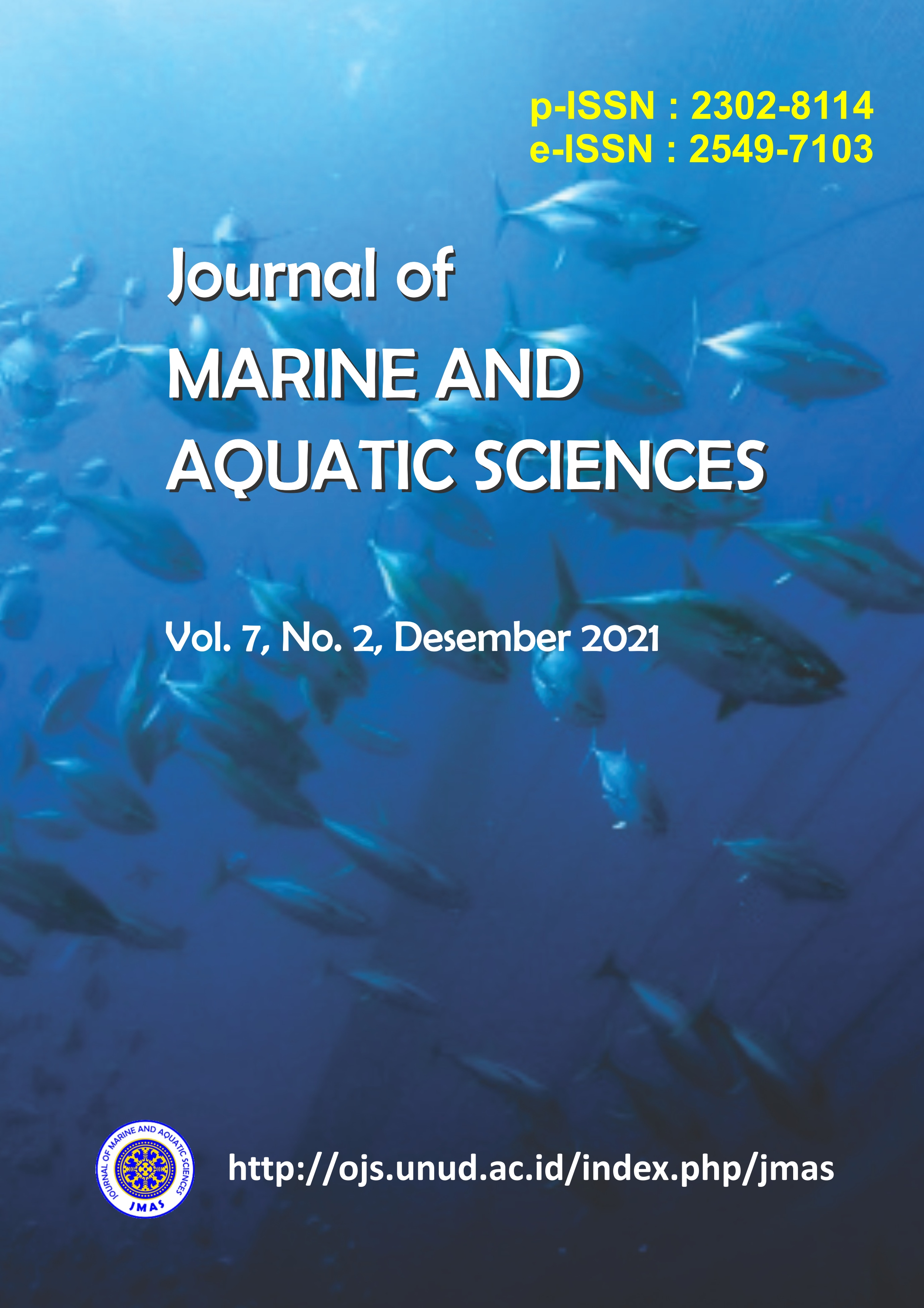Potensi Harmful Algae Bloom (HAB) di Keramba Jaring Apung Perairan Desa Sumberkima Kecamatan Gerokgak, Kabupaten Buleleng
Abstract
Sumberkima Village is one of the villages in Gerokgak sub-district that has the most floating net cage cultivation in Buleleng regency. The development of fish farming activities with floating net cage techniques had an impact on the waters. The leftover feed that is not consumed, and the metabolic wastes produced by aquaculture increased the fertility of the waters so that it is feared that phytoplankton are potentially causing the Harmful Algae Bloom (HAB) phenomenon in the floating net cage aquaculture area of Sumberkima village which can have an impact on water quality, aquatic biota and cultivator’s income. This study aimed to identify the genus phytoplankton that has the potential to cause Harmful Algae Bloom (HAB) and the abundance of phytoplankton that has the potential to cause the Harmful Algae Bloom (HAB) phenomenon. This research was conducted in February 2019 at the floating net cage in Sumberkima village, Gerokgak sub-district, Buleleng regency. The study was spread over 10 points of floating net cages determined by purposive random sampling to represent floating net cages in Sumberkima village. Data were analyzed descriptively with phytoplankton abundance calculation using APHA (2005) method. From the research that has been done, it was found that the type of phytoplankton suspected to have HAB potential was found in 2 class groups namely Dinophyceae with a percentage of 15% consisting of: Prorocentrum, Dinophysis, Alexandrium and Peridinium then Bacillariophyceae with a percentage of 85% as many as 7 genera include: Thalassiosira, Pseudonitzschia, Biddulphia, Nitzschia, Skeletonema, Chaetoceros and Ceratium.
Downloads

This work is licensed under a Creative Commons Attribution 3.0 International License.
Copyright 2012 - 2023 Journal of Marine and Aquatic Sciences (JMAS)
Published by Fakultas Kelautan dan Perikanan Universitas Udayana, Denpasar, Bali, Indonesia
JMAS (p-ISSN 2302-8114; e-ISSN 2549-7103)


